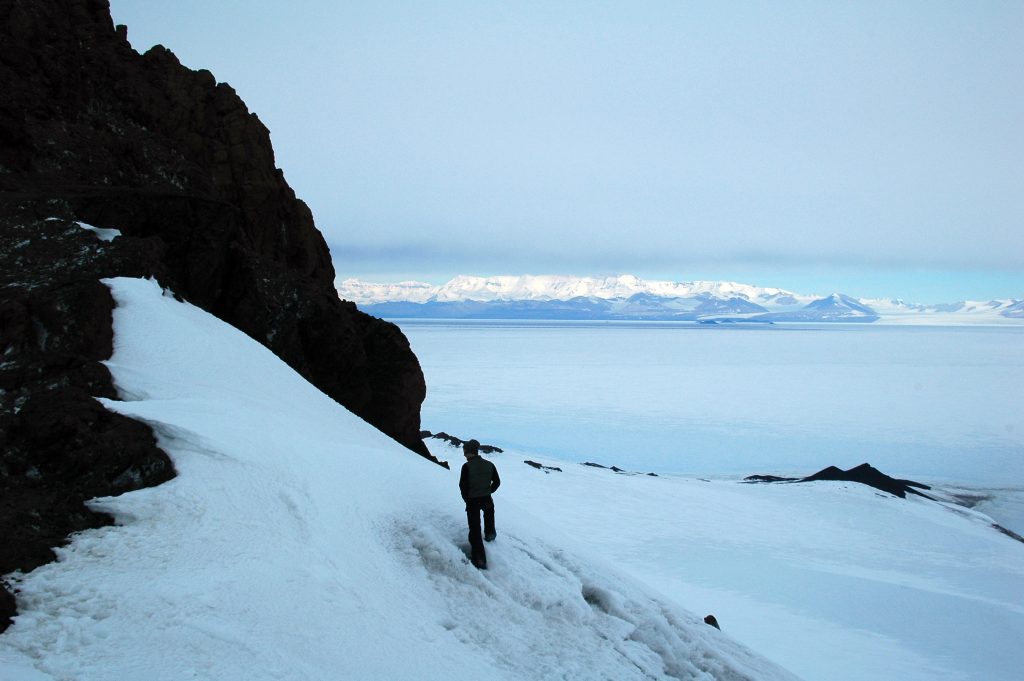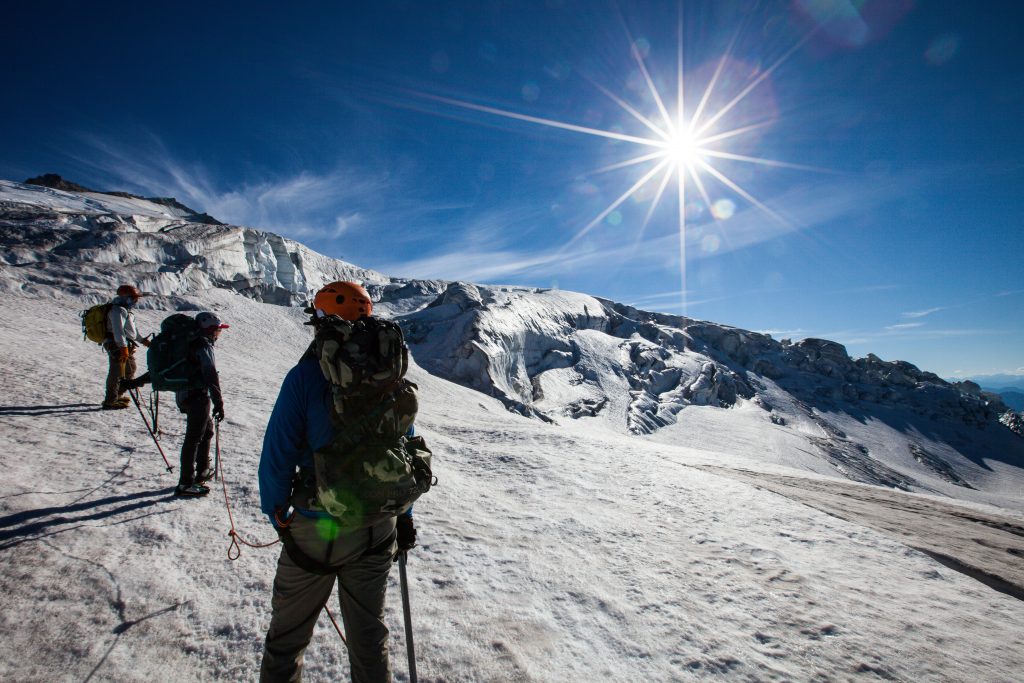It started off as a one-day job helping move a sailboat down the Jersey Shore. It ended up being three sailboat delivery jobs over the span of a week.
When people buy a sailboat, it usually needs to be moved from the previous owner’s slip or the boat yard to it’s new home. Sometimes new owners don’t have the time to make such a trip on their own or even know how to sail. So, they hire someone like my friend Shawn to move it for them. And, depending on the circumstances, a second crew might be necessary, or at least helpful in the process.
Shawn and I took the train down the Jersey Shore and picked up a beautiful 36-foot Hunter. The boat “North Star” was tucked away in a small boat yard deep in a canal system. Under clear skies and with a soft breeze, we motored down the canal toward the Atlantic Ocean. The trick about the canals are the bridges. Only the biggest of bridges have vertical clearances that allow for sailboat masts to fit underneath. In this, our first underpass instance, the drawbridge only opened on the top of the hour. We must have just missed the noon opening and had to tie up and wait.
We emerged into the Atlantic just off the south tip of Staten Island. Finally, we could set out sails and head south along the shore. Behind us, the view blossomed. First we could only see the Verrazano Narrows Bridge, but over time, Brooklyn and Manhattan joined the scene. It was a very cool perspective of the city, and as we continued south, the sun crept closer to the western horizon and the city faded away.
Navigating down the Jersey shore takes due diligence. If you’re unfamiliar with the landmarks, as we were, it just looks like a repeating cycle of small housing developments, occasional water towers and lots of sand. Shawn had been paying better attention than I and just as the blazing red orb of the sun extinguished itself behind the horizon, turning our landmarks into silhouettes, we turned towards shore and entered another canal system, the Manasquan Inlet.
We struck the sails and motored our way in, navigational chart in hand to plot our way and avoid running aground. With a four foot keel below us, we had to follow the marked channel very closely. We made ourselves sandwiches while underway and enjoyed a sunset dinner while out in the ocean, but the evening brought a chill to the air and we tied up and popped ashore to find some hot drinks before continuing on. As it turns out, we ended up with hot chocolates and a bowl of clam chowder.
The bridges from here on weren’t on as strict of a schedule as the previous one that only opened on the hour. We radioed to the bridge master and he obliged to open the bridge on request. As we motored closer, the ebb tide pushing against us spilling out from further up the canal, we saw the red lights flashing, the gates came down to stop the traffic from crossing over the bridge, but the bridge never opened. We waited. Our motor engaged just enough to hold steady in the tide, we watched and still no movement of the bridge. Finally, the radio crackled to life and an apologetic voice announced he couldn’t get the bridge to draw. A mechanic would have to be called. It was now nearing 10pm.
The bridge never got fixed that night as we had hoped, and we again tied up and spent the night on the boat. As it turns out, it was better to wait a few hours before continuing on our journey. The ebbing tide would have made slow going, the dark would have obscured crucial navigational markers, and many of the bridges we needed raised don’t operate through the night.
By 7am, our once broken bridge was back in the game and we quickly passed through on the now flooding tide. I was grateful to do this passage in the day because it was beautiful. The shores of the canal were lush with foliage, a few houses and the sky was clear and sunny like the previous day.
We didn’t get a chance to sail again, but once we arrived at Ocean Gate Marina at the mouth of Tom’s River into Barnegat Bay we left the Hunter 36 for a Hunter 31 that was scheduled to go down to the upper reaches of Chesapeake Bay, a 150 nautical mile voyage.
But there was a twist on this next boat. The owners were sailing with us. Stew and Mary, a nice 50-something couple had just bought this sailboat and wanted to be a part of the move, not so much for the ceremonial value of a maiden voyage, but to learn how to sail. Stew and Mary have done lots of RV traveling and they settled into the cruising lifestyle with ease. When Shawn and I came aboard, Mary had bowls of oatmeal ready complete with fresh fruit, muffins, hot tea and juice. It was a very warm and gracious welcome.
Before heading out, we discussed our route plan, tasks, possible contingency plans and emergency procedures if needed. The weather was still clear and the wind was just starting to pick up. Once out in the bay, we set sail, heeled the boat over and put smiles of glee on the new sailboat owners. Each had a stint at the helm and they both had a great natural feel for steering.
The wind continued to build speed, which wasn’t really a problem except they were coming from the south. The direction we wanted to go. With the increasing wind, the seas started to get choppy and Mary, who held out remarkably well for someone who can get queasy in the car, ended up down below over a bucket.
To have the wind and spray in his face, Stew was thrilled. But it was time for a break and we pulled into Forked River and tied up at the Captain’s Inn to regroup.
The weather report was not looking good for this voyage. The South wind was scheduled to continue for another day or two and thunderstorms and rain were suddenly thrown into the forecast. It was late in the day and we opted to overnight onboard. The forecast was not looking any better by morning. Our hosts at the Captain’s Inn included a great breakfast with our slip fee and we decided it would be best to sail back up to Ocean Gate and wait for a better time to bring the boat down.
Instead of sailing straight back, to Mary’s dismay, Shawn gave Stew some sailing lessons. We covered tacking, jibing, running, reaching, trimming the sails, commands from the helm and even a ‘man overboard’ drill. Stew loved it and Mary loved knowing Stew loved it. She was a real trooper and was back on her feet after we pulled into Ocean Gate and she had a shower.
Stew and Mary let us sleep on their boat that night as they drove back to Philadelphia. Shawn and I had a rental car delivered the next morning so we could drive down to Havre de Grace in Maryland to pick up our next delivery: yet another Hunter, this time 32 feet long.
Havre de Grace is a small town on the shore of the Susquehanna River just before it flows into Chesapeake Bay. Yes, it would have been great to made the delivery down with Stew and Mary and then been so close to our next pick-up. Instead, we arrived via car in the late afternoon with just enough time to pick up some food and supplies for the expected two day voyage and get to bed.
We woke at 4am to take advantage of the tide. And with a light breeze under clear dark skies we were able to slip silently away under sail into the night. Though the expanse of water around us was wide and vast, there was only a narrow and specific channel available to us. Buoy markers, some lit, some not were our guides and I kept vigilant track of our progress on the chart providing Shawn with course headings and distances to the next buoy.
Slowly the darkness started to lift and the inky landscape around us gained texture and finally color. The sunrise was subtle but beautiful, the wind was fresh and the scenery was stunning. All the land was heavily forested complementing the rich blue of the water. We were able to continue to sail around Turkey Point and up into Elk River where we picked up the C&D Canal, a connector between the Chesapeake and Delaware bays.
We struck our sails and engaged our motor as sailing through the canal was not permitted. As we entered the canal a small inlet caught our eye and we popped in to check it out. Two sailboats, one blue, one green stood out to Shawn and me. The bohemians, as we later came to describe them, had an earthy feel to them. We didn’t know at the time they were sailing together, but the way they were painted and had their laundry out to dry in the morning sun spoke volumes of their character.
Once through the canal we headed down the Delaware River towards the bay. We hugged the southern shore to stay out of the main current of the flooding tide until it turned in the next hour or so. That’s when we saw the bohemian sailboats across the river. They had opted to hug the northern shore and seemed to be doing much better for it. As the tide slackened and turned we headed for the deeper water. By now the bohemian boats were well ahead of us and we followed them all the way down to Cape May, the southern tip of the Jersey shore. The wind finally picked up again in the late afternoon, this time from the north, and we were able to sail the home stretch to the Cape May Canal. The sun set behind us before reaching the canal and we lost sight of the boats ahead of us in the darkness.
Again, we put our sails away as we entered the canal and while on the three-mile stretch into the protected intercostal waters of Cape May, Shawn busied himself in the galley whipping up some rice and black beans with cheese tortillas and fresh corn on the cob.
With the new moon and onshore wind combined the tides were exceptionally high. We did have a few fixed bridges to pass under and we barely had clearance to do so. It was an intense moment of breath holding and lip biting as we had nowhere else to go. Once we found a place to tie up, dinner was served and bed was found.
The weather report was not looking good for the next day, but we woke at 4am again to check the weather one more time. The rain was pelting down causing a ruckus on the fiberglass deck of the boat above us. The wind was still coming from the northeast (directly against us) and the sea was stirred up into 7-9 foot swells. We went back to bed.
Later that day, once the rain had stopped and the wind abated some and after I baked up a breakfast of fresh cinnamon rolls and orange juice, we motored up the intercostal waterway towards Hereford Inlet. Sawn was attracted to a little dock labeled Grassy Shore Marina. As we were tying up, Jim, the owner, came out and asked if we needed anything. We told him we were waiting out the tide and looking to head out Hereford at high tide. Hereford Inlet, as it turns out, has a very fluky sand shoal that moves around and authorities have foregone trying to mark any sort of channel with buoys. We learned this from Jim after walking up to his bait shack. He then offered to let us stay tied up overnight for no charge if we wanted. This was quite the offer as we just paid $60 for our tie-up in Cape May.
Shawn and I had to have a serious conversation about our strategy. We both really wanted to go out at Hereford. This would save us four hours of going back down to the Cape May Inlet and then back up the coast in the open ocean. But one thing kept nagging at us. This is not our boat. We just couldn’t risk having a swell, even in high tide, even in the extreme high tide we now had, pick us up then drop our keel right onto the shoal. We both agreed, if it was our own boat we’d be much more willing to take the risk. Oh, and did I mention high tide was at 10pm, in the pitch dark? Yeah, that wouldn’t help any either.
Once again, we were up at 4am and underway by 5. With extremely high tides come extremely low tides. The air was ripe with the smell of tidal decay, the smell of the sea. Even though we were in the channel, we experienced that dreadful forward surge when our keel found the mushy bottom of the channel. We were able to power through, but there was always the risk of getting totally stuck and having to wait for the tide to rise again and lift us up and out.
As we approached the Cape May Inlet, two familiar masts could be seen over the inlet berm heading out to sea. Our bohemian friends, whom we saw anchored the morning before had taken a rest day to let the weather pass and the seas to calm (some). In fact, a whole fleet of sailboats were slowly making their way out to sea. We fell right in line, turned north, raised our sails and set course on a port tack catching the favorable nor’wester wind.
From here it was pretty much a straight shot up the coast. The seas had calmed some and the swells were down to a gentle rolling 3-5 feet. It took us most of the day to work ourselves up the 70 nautical miles up the coast passing Ocean City, Atlantic City, Little Egg Harbor and finally the Barnegat Bay Inlet. Along the way Shawn whipped up some spinach croissants for lunch. We each took turns at the helm or napping, checking the charts, journaling and cooking.
The Barnegat lighthouse made for a welcome monument as we surfed the waves exiting the ocean and entering the calm waters of Barnegat Bay. As it has been typical of our benchmarks in this journey so far, the sun was setting and the sky darkened simultaneously with our moment of transition from sea to bay. I was now down below brewing up dinner on our gimble stove (one that rocks to keep the burners level), black bean lentil soup with warm corn muffins.
We had one more bridge to pass under just north of Tom’s River and that bridge closed at 11pm. We were through by 10.30pm and knowing we had an intricate course to navigate to wind our way through the shallow waters to reach the marina, we had plotted everything on the chart to get us through. The channel started off clear enough, with buoys on either side. Although, they were unlit and I kept scanning for the next set with a spotlight to find our next mark.
This is where things started to get frustrating. The channel did not match the chart and our buoys had abandoned us. Every now and then we would find a stick poking out of the water, but we started to feel the keel blend into the marshy bottom. We would then reverse out of the muck and try a different tact. We made it as far as the southwest corner of West Point Island (not of Army fame) and couldn’t find the rest of the 6-foot channel marked on the chart.
It started to rain on us and Shawn called the boat owner who was familiar with the passage and he came out in his motorboat and a much more powerful spot light to guide us in. As it turns out, the channel was only about four feet deep and we just had to power through the muck where the keel made contact.
The boat owners, Don and Ann Marie, were grateful to have us there and were understanding of the challenge presented by a poorly marked too shallow channel.
Shawn and I crashed on the boat that night and woke at our all too familiar time of 4am to catch the 5.30 train up to Manhattan where we had a sailing date with Jordan and Lizzie on Shawn’s own boat, Elizabeth.



